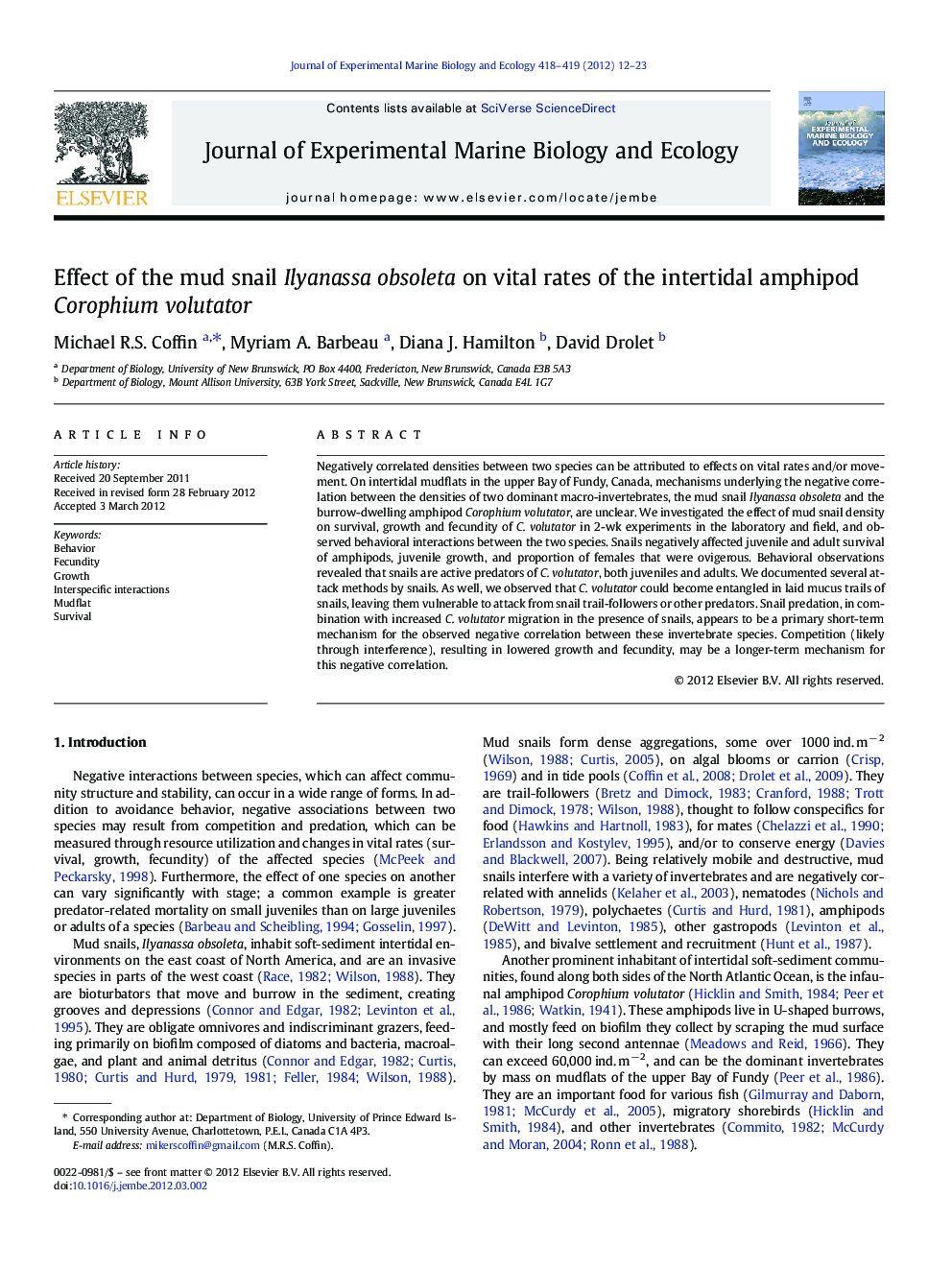| Article ID | Journal | Published Year | Pages | File Type |
|---|---|---|---|---|
| 4396032 | Journal of Experimental Marine Biology and Ecology | 2012 | 12 Pages |
Negatively correlated densities between two species can be attributed to effects on vital rates and/or movement. On intertidal mudflats in the upper Bay of Fundy, Canada, mechanisms underlying the negative correlation between the densities of two dominant macro-invertebrates, the mud snail Ilyanassa obsoleta and the burrow-dwelling amphipod Corophium volutator, are unclear. We investigated the effect of mud snail density on survival, growth and fecundity of C. volutator in 2-wk experiments in the laboratory and field, and observed behavioral interactions between the two species. Snails negatively affected juvenile and adult survival of amphipods, juvenile growth, and proportion of females that were ovigerous. Behavioral observations revealed that snails are active predators of C. volutator, both juveniles and adults. We documented several attack methods by snails. As well, we observed that C. volutator could become entangled in laid mucus trails of snails, leaving them vulnerable to attack from snail trail-followers or other predators. Snail predation, in combination with increased C. volutator migration in the presence of snails, appears to be a primary short-term mechanism for the observed negative correlation between these invertebrate species. Competition (likely through interference), resulting in lowered growth and fecundity, may be a longer-term mechanism for this negative correlation.
► Mud snail interactions with amphipods on mudflats in Bay of Fundy, Canada. ► Snails negatively affect amphipod survival and juvenile growth. ► Snails are opportunistic predators of amphipods and other species. ► Snail attack methods vary and have implications for gastropods in other systems.
